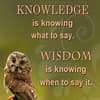Podcast
Questions and Answers
Which need must be satisfied first according to Maslow's Hierarchy of Needs?
Which need must be satisfied first according to Maslow's Hierarchy of Needs?
- Physiological needs (correct)
- Safety needs
- Esteem needs
- Self-actualization
What type of motivation drives individuals to engage in activities for their own enjoyment?
What type of motivation drives individuals to engage in activities for their own enjoyment?
- Extrinsic motivation
- Cognitive motivation
- Biological motivation
- Intrinsic motivation (correct)
In the context of Achievement Motivation, which factor is primarily considered a driving force?
In the context of Achievement Motivation, which factor is primarily considered a driving force?
- Personal satisfaction (correct)
- Social comparison
- Parental approval
- Fear of failure
The Need for Affiliation is primarily focused on which of the following?
The Need for Affiliation is primarily focused on which of the following?
What does the Need for Power typically involve?
What does the Need for Power typically involve?
Which emotion theory emphasizes the role of cognitive appraisal in the experience of emotions?
Which emotion theory emphasizes the role of cognitive appraisal in the experience of emotions?
What does the Thematic Apperception Test (TAT) primarily assess?
What does the Thematic Apperception Test (TAT) primarily assess?
Which of the following needs comes after Love & Belongingness in Maslow's Hierarchy?
Which of the following needs comes after Love & Belongingness in Maslow's Hierarchy?
What is a characteristic behavior men exhibit to show emotional expressions?
What is a characteristic behavior men exhibit to show emotional expressions?
According to the James-Lange Theory of Emotion, how do we identify our emotions?
According to the James-Lange Theory of Emotion, how do we identify our emotions?
What does the Cannon-Bard Theory of Emotion suggest about emotional experience?
What does the Cannon-Bard Theory of Emotion suggest about emotional experience?
How do emotions get organized, according to the content provided?
How do emotions get organized, according to the content provided?
What role does the environment play in the Schachter-Singer Theory of Emotion?
What role does the environment play in the Schachter-Singer Theory of Emotion?
Which basic emotions are most commonly agreed upon?
Which basic emotions are most commonly agreed upon?
Which of the following typically characterizes women’s emotional expression?
Which of the following typically characterizes women’s emotional expression?
What area of the brain is associated with happiness, according to the neuroscience of emotions?
What area of the brain is associated with happiness, according to the neuroscience of emotions?
Which characteristic best describes individuals with a high need for achievement?
Which characteristic best describes individuals with a high need for achievement?
What type of motivation do people with a low need for achievement typically experience?
What type of motivation do people with a low need for achievement typically experience?
In the Thematic Apperception Test, what do researchers look for in participants' stories?
In the Thematic Apperception Test, what do researchers look for in participants' stories?
Which statement is true about individuals with a high need for affiliation?
Which statement is true about individuals with a high need for affiliation?
What describes a person with a strong need for power?
What describes a person with a strong need for power?
Which factor may influence whether individuals identify as homosexual or heterosexual?
Which factor may influence whether individuals identify as homosexual or heterosexual?
What is a common misconception about the sources of sexual excitement for humans?
What is a common misconception about the sources of sexual excitement for humans?
Which type of person is identified as intersex?
Which type of person is identified as intersex?
What is a key factor that distinguishes the need for power from other motivational needs?
What is a key factor that distinguishes the need for power from other motivational needs?
What is a characteristic of individuals with a low need for affiliation?
What is a characteristic of individuals with a low need for affiliation?
Flashcards are hidden until you start studying
Study Notes
Gender Differences in Expression
- Men exhibit aggression, heavy drinking, exploitative behavior, and increased participation in competitive sports.
- Women demonstrate emotional expression through social responsibility.
Understanding Emotions
- Emotions comprise physiological and cognitive elements that influence behavior.
- Distinct physical changes accompany emotions, allowing identification of feelings such as happiness.
- Emotions can be categorized as positive or negative, with basic emotions recognized as happiness, anger, fear, sadness, and disgust.
Theories of Emotion
- James-Lange Theory: Emotions result from bodily responses to external stimuli; physiological reactions inform emotional labeling.
- Cannon-Bard Theory: Physiological arousal and emotional experiences occur simultaneously due to nerve stimulus from the brain.
- Schachter-Singer Theory: Emotions are identified through environmental observation and comparison to others, combining physiological arousal with cognitive labeling.
Neuroscience of Emotions
- Specific emotions activate different brain regions, e.g., happiness correlates with decreased cortical activity, while sadness is linked to increased activity.
Sexual Behavior Insights
- Men maintain a constant receptiveness to sex, while women are more so during ovulation.
- Males generally exhibit a stronger sex drive, with thoughts about sex occurring more frequently than in females (54% vs. 19%).
- Sexual arousal can be triggered by various stimuli beyond the presence of a partner.
Sexual Orientation
- Homosexuality: Attraction to the same sex; “gay” for males and “lesbian” for females.
- Bisexuality: Attraction to both same-sex and opposite-sex individuals.
- Sexual orientation exists on a continuum, influenced by genetic, hormonal, and brain structure factors.
Transgenderism
- Describes individuals whose gender identity or expression diverges from their assigned sex at birth.
- May include those identifying as neither male nor female or those pursuing sex-change operations.
- Intersex individuals are born with atypical sexual organs or chromosomal patterns, though this condition is rare.
Need for Achievement
- Stable characteristic where individuals derive satisfaction from striving for excellence.
- High achievers prefer moderately difficult tasks to prove success, while low achievers often select either too easy or too hard challenges to avoid failure.
Measuring Achievement Motivation
- Thematic Apperception Test (TAT): Participants create stories based on ambiguous images, revealing achievement-related themes through a standardized scoring system.
Need for Affiliation
- Individuals with a high need for affiliation prioritize relationships and socialization with friends.
Need for Power
- Desire for impact and control over others, with those high in power seeking influential roles and displaying behavior indicative of power, such as luxury possessions.
Motivation
- Defined as factors that energize and direct behavior, encompassing biological, cognitive, and social dimensions.
Approaches to Motivation
- Instinct: Inborn behaviors geared towards survival.
- Drive-Reduction: Biological needs create drives that compel satisfaction.
- Arousal: People seek to maintain optimal stimulation levels, adjusting as needed.
- Cognitive: Motivation stems from thoughts and expectations, influencing study habits based on anticipated outcomes.
- Intrinsic vs. Extrinsic Motivation: Intrinsic is motivated by enjoyment, while extrinsic motivation relies on external rewards.
Maslow’s Hierarchy of Needs
- Motivational needs are structured in a pyramid, requiring lower-level needs to be met before higher-order needs:
- Physiological Needs: Basic needs for survival (food, water, sleep).
- Safety Needs: Secure environment for effective functioning.
- Love & Belongingness: Affection and group membership.
- Esteem Needs: Recognition of competence by others.
- Self-Actualization: Realizing personal potential and fulfillment through talent application.
Studying That Suits You
Use AI to generate personalized quizzes and flashcards to suit your learning preferences.





